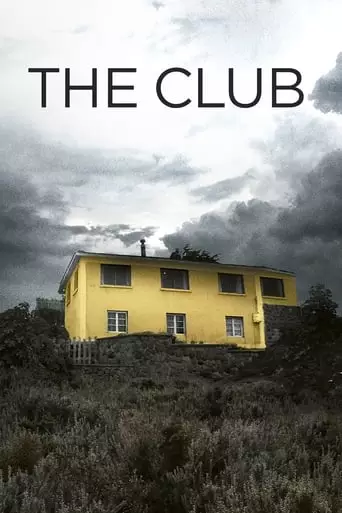
The Club (2015) Watch Online Free
In a secluded house in a small seaside town live four unrelated men and the woman who tends to the house and their needs. All former priests, they have been sent to this quiet exile to purge the sins of their pasts, the separation from their communities the worst form of punishment by the Church. They keep to a strict daily schedule devoid of all temptation and spontaneity, each moment a deliberate effort to atone for their wrongdoings.
Directed by Pablo Larraín, The Club is a Chilean drama that delves into the lives of four retired Catholic priests residing in a secluded house on the outskirts of a small beach town. These men, under the supervision of a vigilant female caretaker, have been sent to this remote location to atone for their alleged sins and crimes, including child abuse, baby-snatching for adoptions, and whistleblowing. Their daily routine is strictly controlled: they are not permitted to mingle with the townsfolk and are only allowed out during early morning and late night. Their only hobby is breeding a racing dog and entering competitions.
The priests’ secluded existence is disrupted when a new priest arrives, bringing with him a victim of his child abuse. This event leads to the priest’s suicide, prompting the arrival of a new spiritual director who challenges the established order and forces the priests to confront their past actions. The film explores themes of guilt, redemption, and the moral complexities of the Catholic Church’s handling of sexual abuse cases.
Upon its release, The Club received critical acclaim for its unflinching portrayal of the Catholic Church’s handling of sexual abuse cases. The film was lauded for its stark realism, compelling performances, and its ability to provoke deep reflection on institutional corruption and moral responsibility. It won the Silver Bear Grand Jury Prize at the 65th Berlin International Film Festival and was selected as the Chilean entry for the Best Foreign Language Film at the 88th Academy Awards, though it was not nominated.
After watching The Club, you may experience a profound sense of discomfort and introspection. The film’s unflinching portrayal of the Catholic Church’s handling of sexual abuse cases is both harrowing and thought-provoking, leaving you to grapple with the moral complexities presented.
The stark realism and emotional depth of the narrative may evoke feelings of empathy for the victims and a deep-seated anger towards the institutional failures depicted. You might find yourself reflecting on the broader implications of the film, considering the systemic issues within powerful institutions and the human capacity for both good and evil.
The film’s minimalist style and somber tone contribute to a lingering sense of unease, prompting you to question societal structures and the nature of justice. This introspection may lead to a heightened awareness of the importance of accountability and the need for systemic change.
Overall, The Club is a film that challenges viewers to confront uncomfortable truths, leaving a lasting impact that encourages critical reflection on issues of morality, power, and institutional responsibility.
